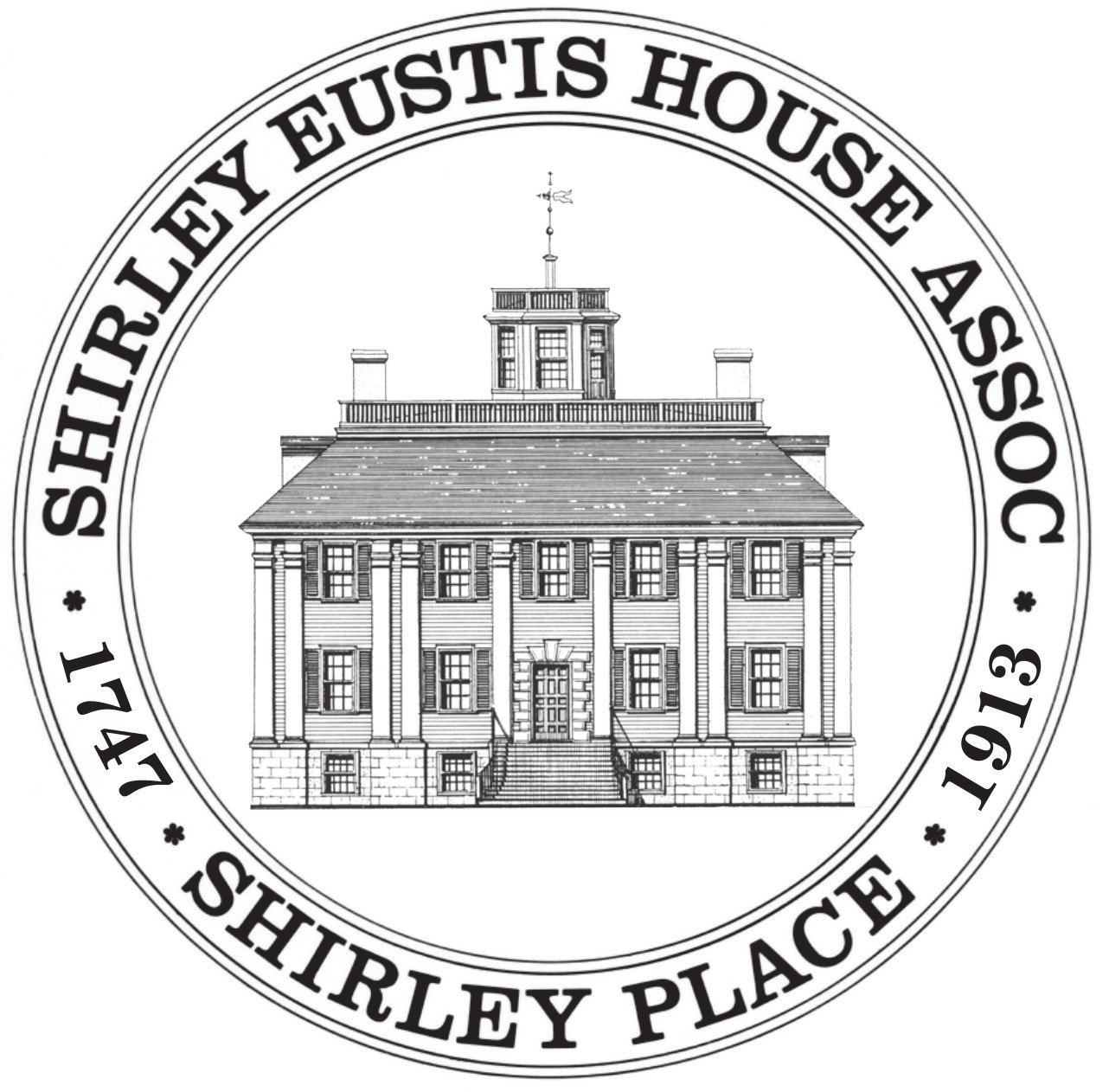
1747 TO THE PRESENT
A History Blog for the Shirley-Eustis House Association.
Memento Mori
Remembering Lady Frances Shirley
Lady Frances Shirley Mourning Ring; Image from the Massachusetts Historical Society
In honor of Halloween coming up at the end of this month, it seems rather appropriate to give a brief glimpse of colonial mourning customs and traditions. The 18th century had a number of customs to remember lost loved ones. Mourning jewelry was perhaps the most popular memento mori, such as this one commemorating the death of Lady Frances Barker Shirley who died on August 31, 1746. Governor William Shirley's beloved wife died the same year Shirley purchased the 33 acre Roxbury property. While it is believed Lady Frances helped design the landscape of the property, she never got to see the completion of the stunning Georgian Mansion.
This gold mourning ring with black enamel from the Massachusetts Historical Society has a dedication that reads "Hone Mrs F Shirley." We do not know who may have worn this ring - possibly one of her daughters. The sisters, Elizabeth Shirley Hutchinson, Judith Shirley, Harriet Shirley Temple, and Maria Catherine Shirley Erving, were all already grieving the loss of their sister, Frances Shirley Bollan, whom we presume died from childbirth in 1745- just a year before they lost their mother. Such loss was unfortunately quite normal in colonial society.
Portrait of Lady Frances Shirley in mourning. This portrait is hung in the Great Hall of the Shirley-Eustis House.
Little is known about the death of Lady Frances, including the location of her remains. Thus far, we have been unable to locate any records relating to the cause of the 54-year-old's death, though diseases such as dysentery and smallpox was no stranger in colonial Boston. Historical accounts often declare Frances Shirley's remains are located in the crypt beneath King's Chapel. However, there is no church record to prove this; the Shirley family did not own a tomb in the King's Chapel crypt and we do not know of a Shirley tomb located at any of the nearby burial grounds. King's Chapel records only reveal a decree that Governor William Shirley's remains be placed in the tomb directly below the Governor's pew, honoring his patronage to building the "stone chapel" and laying its cornerstone. However, some clues to the location of Lady Frances' remains come from the memorial of her and her daughter Frances Shirley Bollan, erected on the wall of the box pew the Shirley family owned, located beside the special Governor's pew at King's Chapel.
Shirley Memorial next to the Governor’s pew at King’s Chapel.
In Joan Coutu's art history book Persuasion and Propaganda: Monuments and the Eighteenth-Century British Empire we also learn that the monument of Frances Shirley and her daughter Frances Bollan at King’s Chapel was done by Peter Scheemakers, a Flemish sculptor who worked in London. In addition to the sculpted Shirley coat of arms and bust of Frances Shirley, the monument contains fifty-one lines of Latin text that reveals a clue to where Frances might be buried. Here we learn that Frances Shirley was "deceased at Dorchester in the Massachusetts" and "entombed in the common Burying ground of this town." Does this mean that she is buried at one of the burying grounds in Dorchester? Or is she perhaps at the Central Burying Ground located in the Boston Common? We need to do a little more digging (and welcome volunteers) to figure this out!
Rather than elaborate tombstones, distinguished families in the 18th century often commissioned funeral monuments inside churches to memorialize loved ones. According to Joan Coutu, the purpose of these monuments inside churches goes even beyond memento mori. She argues that "the monuments erected in the colonies are about the resident colonial elite and their perception of themselves and the colonies in which they lived. For the most part, the concerns of the colonists were largely the same as those of minor gentry in the English provinces: social ambitions, social acceptance, and familial dynasties (75)." Even today, the Shirley family continues to remind parishioners and Freedom Trail visitors of their status in colonial society through their memorial.
We may only be just beginning to learn more about Lady Frances Shirley, but artifacts left behind - including the mourning ring and King’s Chapel monuments - provide the perfect starting point to better understand and relate to the many families who lived inside the Shirley-Eustis House.
-Jennifer Roesch
SEH Staff




